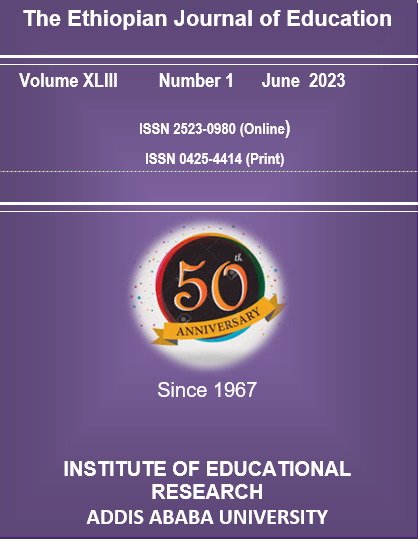STEM Education: A Longitudinal Performance Analysis in Terms of Gender, Grade Level and Subject
DOI:
https://doi.org/10.20372/eje.v43i1.8593Keywords:
gender, grades 1-12, intervention, STEM performanceAbstract
The objectives of this study were to examine students' STEM performances in terms of gender, grade level, and subject and locate exactly when interventions should be made. The study employed a quantitative design. The data sources were school rosters that revealed 10 consecutive years of STEM performances of students. The data sources used for the analysis were the performance records of all 74 students (43% boys and 57% girls) who registered as grade one in 2003/04 (1996 E.C) and completed grade 10 in 2012/13 (2005 E.C) academic years. Data were analyzed using means and One-Way Repeated-Measures ANOVA. The results revealed that Mathematics, Environmental (integrated) science and Chemistry performances showed statistically significant declines. This was grade-level - but not mostly gender-specific. Biology and Physics performances fluctuated regardless of gender. It was concluded that the poor STEM performance problem belonged to almost all students and the problem was grade-level and subject-specific. As to the interventions, findings revealed that significant performance losses began in the middle-grade levels of early schooling (grades 3 and 4), which is not subject- or gender-specific; and they reappeared at late middle school (grade 8), which is subject-specific but not gender-specific. So, interventions should come in the middle grades of early schooling regardless of subject and gender, and in late middle school for selected subjects regardless of gender. It is recommended that STEM education improvement initiatives should not be gender-specific. They should be grade level- and subject-targeted.
